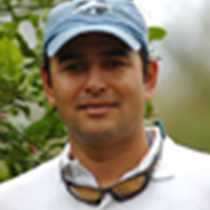Southern Isabela Island
The southern end of Isabela Island is one of the most intriguing realms we have the privilege to visit during our expedition around the “Encantadas.” Isabela Island is by far the largest one in the Galápagos archipelago, and accounts for more than half the total land area of the islands.
We spent the morning exploring Urbina Bay, on the western flank of Alcedo volcano. This place is of great geological and historical interest, because more than three miles of the shoreline was uplifted by as much as 12 feet above sea level in 1954. This fabulous geological event was documented and reported by a passing ship which happened to be in the area soon after the uplift occurred. The catastrophic and extraordinary event resulted in enormous coral heads, as well as many other marine organisms, being left high, dry and exposed to the air almost instantaneously.
Today’s two hiking options (short and long walks) at Urbina Bay were highly successful. On both hikes we observed several large and colorful Galápagos land iguanas; one of our guests had a particularly enjoyable and close encounter when a male iguana came to sniff her shoelaces. Our bodies were certainly feeling the effects of the equatorial sun, so after the hike we took a refreshing dip in the chilly ocean off the black sand landing beach.
The afternoon found us anchored further south, at our second destination of the day, Punta Moreno. The more adventurous among us took a “lava hike” across the vast pahoehoe lava flows that spread between the volcanoes of Sierra Negra and Volcan Azul. This hike was an unexpected treat! After treading carefully over a mile of sharp, barren lava, the hikers had the rewarding experience of coming upon several brackish oases where four well-fed flamingoes were spotted. The vision of lush greenery and brilliant pink flamingos surrounded by miles of twisted lava seemed almost other-worldly!
Those not feeling inclined towards a hike across the lava fields, opted for a panga ride instead. From the Zodiacs we admired Galápagos penguins, Galápagos sea lions (some of us watched, fascinated as a large male sea lion slapped and broke apart a fish he had captured), and flightless cormorants with chicks. In the mangrove lagoons, huge, dark marbled rays and sea turtles were observed. Late in the afternoon, as the sun set like an orange ball of fire, we all returned to “our home away from home,” the National Geographic Islander.
The southern end of Isabela Island is one of the most intriguing realms we have the privilege to visit during our expedition around the “Encantadas.” Isabela Island is by far the largest one in the Galápagos archipelago, and accounts for more than half the total land area of the islands.
We spent the morning exploring Urbina Bay, on the western flank of Alcedo volcano. This place is of great geological and historical interest, because more than three miles of the shoreline was uplifted by as much as 12 feet above sea level in 1954. This fabulous geological event was documented and reported by a passing ship which happened to be in the area soon after the uplift occurred. The catastrophic and extraordinary event resulted in enormous coral heads, as well as many other marine organisms, being left high, dry and exposed to the air almost instantaneously.
Today’s two hiking options (short and long walks) at Urbina Bay were highly successful. On both hikes we observed several large and colorful Galápagos land iguanas; one of our guests had a particularly enjoyable and close encounter when a male iguana came to sniff her shoelaces. Our bodies were certainly feeling the effects of the equatorial sun, so after the hike we took a refreshing dip in the chilly ocean off the black sand landing beach.
The afternoon found us anchored further south, at our second destination of the day, Punta Moreno. The more adventurous among us took a “lava hike” across the vast pahoehoe lava flows that spread between the volcanoes of Sierra Negra and Volcan Azul. This hike was an unexpected treat! After treading carefully over a mile of sharp, barren lava, the hikers had the rewarding experience of coming upon several brackish oases where four well-fed flamingoes were spotted. The vision of lush greenery and brilliant pink flamingos surrounded by miles of twisted lava seemed almost other-worldly!
Those not feeling inclined towards a hike across the lava fields, opted for a panga ride instead. From the Zodiacs we admired Galápagos penguins, Galápagos sea lions (some of us watched, fascinated as a large male sea lion slapped and broke apart a fish he had captured), and flightless cormorants with chicks. In the mangrove lagoons, huge, dark marbled rays and sea turtles were observed. Late in the afternoon, as the sun set like an orange ball of fire, we all returned to “our home away from home,” the National Geographic Islander.




